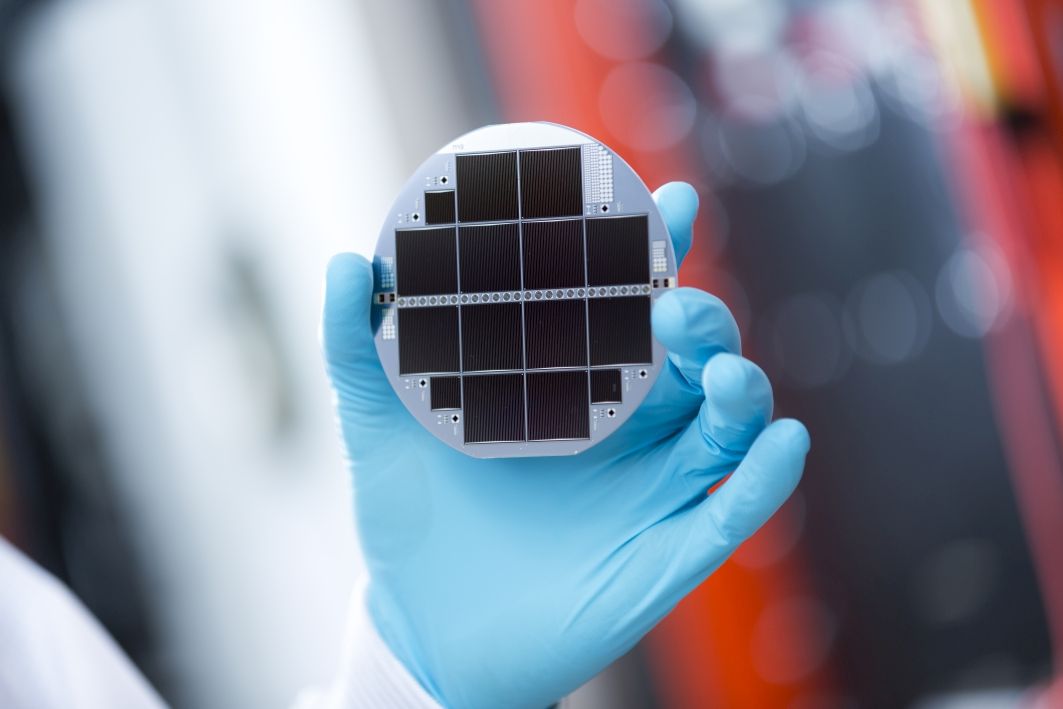European researchers analyze environmental impact of new III-V/Si tandem solar cell technology – article in Energy & Environmental Science
Electricity from solar panels will be a major pillar of a sustainable energy system, and in view of the climate goals, the transformation of our energy system requires a major growth in PV installation. Silicon solar cells which dominate the markets worldwide have seen a tremendous cost reduction, at the same time their efficiency has increased to a level which reaches the theoretical limit of the material. Therefore, Fraunhofer ISE is working on new approaches such as tandem photovoltaics – combining a Silicon based bottom cell with thin layers of III-V semiconductors – in order to produce solar cells with an efficiency going far beyond the theoretical limit of Silicon. Such shifts in technology and materials, however, may have unforeseen environmental impacts, given that the manufacturing of the new generations of tandem solar cells involves energy intensive processes, and requires new and occasionally toxic materials. The III-V/Si tandem PV technology still being at an early R&D stage, motivated the participants in the EU funded project SiTaSol to assess its full environmental impact, including the complete life cycle from production to waste. Researchers from the University of Leiden together with colleagues from Fraunhofer ISE have looked at all the relevant aspects and published their encouraging results in the prestigious journal Energy & Environmental Science. Apart from looking at the life cycle environmental impacts of state-of-the-art III–V/Si PV design concepts, the study also serves as an early guidance to identify more sustainable manufacturing processes of III–V/Si tandem cells that will eventually achieve an optimal balance between cost, efficiency and environmental impacts.

The researchers found that the most prominent environmental impact of manufacturing III-V/silicon tandem cells, compared to standard silicon photovoltaics today, is the additional electric energy consumed for the epitaxy growth of the thin III-V layers. Today a large part of this energy is coming from conventional sources. Frank Dimroth, in charge of III-V and concentrator PV at Fraunhofer ISE states: ”This impact may be overcome by developing more energy efficient manufacturing processes and of course by moving towards more sustainable electricity based on renewables. Today the environmental impact of a new solar cell technology relies on how we are producing our electricity from fossil fuels. This negative impact will diminish as soon as we have managed the transition towards 100% renewable energy sources.” The researchers were further able to confirm that, thanks to the high conversion efficiencies of the new tandem cells, fewer materials are ultimately required per unit of electricity generated. A fact which leads them to conclude that continuous innovation in solar cell technology and more energy efficient manufacturing technologies can further lower the environmental impacts of photovoltaics.
The article “Environmental impacts of III–V/silicon photovoltaics: life cycle assessment and guidance for sustainable manufacturing“ issued out of the EU funded project SiTaSol and has been published in Energy & Environmental Science.
Last modified: